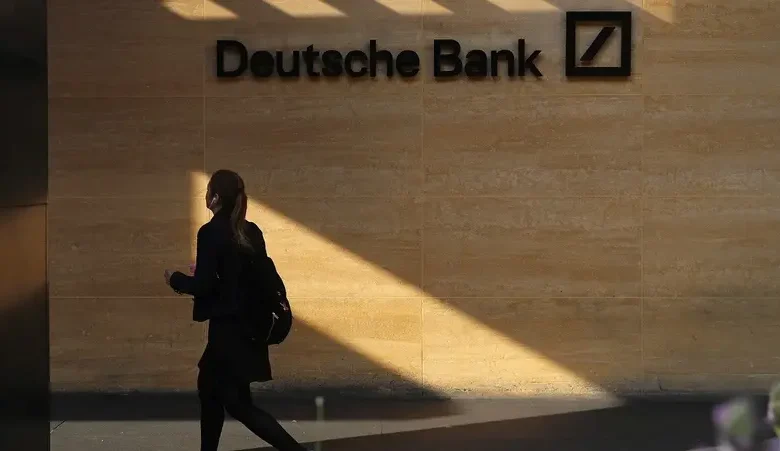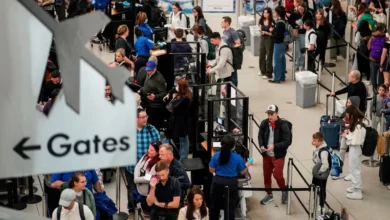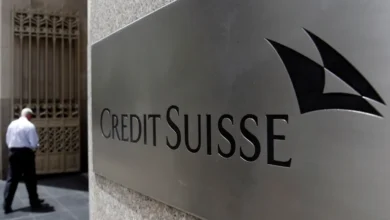Deutsche Bank used big trades to raise cash in March turmoil: Sources

As banks came under mounting pressure in March, Deutsche Bank used big trades to give its cash buffers a temporary boost, employing a method that European regulators have raised concerns over, two sources familiar with the situation said.
Deutsche swapped billions of euros in securities for cash and government bonds, the sources told Reuters, which count towards its liquidity coverage ratio (LCR). This is meant to determine the extent of a bank’s access to ready cash to fund outflows such as depositor withdrawals.
While a legitimate banking practice, the move underscored concern at Deutsche over the wider turmoil. Having a large cash pile would have reassured investors and clients after Credit Suisse and a number of US banks suffered deposit runs.
The trades caught the attention of European Central Bank (ECB) supervisors, who questioned Germany’s largest lender about them during routine exchanges, the sources said.
Even without the trades, Deutsche would have far exceeded a 100 percent LCR regulatory requirement and overshot its own target, the sources said, adding that its liquidity is not a concern.
The important thing for the ECB, they said, is to establish how much liquidity a bank has at that given moment, as well as what it plans on having in the following months.
The issue is that liquidity can evaporate if short-term trades are not renewed, clouding the longer-term view.
“These things can shift around very quickly but as a supervisor I would be worried if they were doing this at the end of quarter, just to look nicer, and I would want to look into it,” said Thorsten Beck, Director of the Florence School of Banking and Finance and a co-chair of the Advisory Scientific Committee of the European Systemic Risk Board.
Deutsche’s use of such trades to improve its liquidity position at the height of the recent banking turmoil has not been previously reported and conversations with the regulator are confidential.
The practice is not unusual among big banks, but it was flagged by the ECB in a 2019 stress test as a technique for making a bank look stronger.
Deutsche’s trades allowed it to post an increase in its LCR in March, helping chief executive Christian Sewing praise the bank’s “resilience” and “solid foundation” to analysts when presenting the first-quarter figure in April.
Deutsche “actively manages to a conservative liquidity profile across a number of liquidity metrics,” a spokesperson told Reuters. Its liquidity level reflects “prudent steering in an uncertain market environment” and the late March increase was “mainly driven by seasonal movements,” they added.
An ECB spokesperson declined to comment.
‘Solid foundations’
March was a tense period for banks. Days after Switzerland engineered the rescue of Credit Suisse, Deutsche’s customers began withdrawing deposits, its executives later said, while shares in the bank dropped as much as 15 percent on a single day.
One concern in the market at the time was whether banks had enough cash on hand to meet the demands of depositors. Euro zone banks are required to have an LCR of at least 100 percent, meaning they have enough liquid assets to cover a month’s worth of outflows.
Deutsche’s trades helped it raise its LCR to 143 percent at March 31, its first-quarter earnings report published in April showed.
The figure stood at 137 percent on March 23, it had reported in a filing at the time, in an unusual move meant to calm markets.
The sharp increase came as a surprise, however, after Deutsche said in February that it would steer the LCR ratio lower towards its 130 percent target during the year.
Such short-term fixes, which generate big LCR moves, are likely to raise fresh questions from regulators and analysts about the reliability of requirements introduced after the global financial crisis of 2008.
Credit Suisse said it had an LCR of around 150 percent, calculated using a three-month average, less than a week before being declared non-viable by Swiss authorities and taken over by UBS.
One source said that if there is one thing that the ECB had learned from the rapid demise of Credit Suisse is that the LCR is an unreliable indicator as deposits can disappear overnight.
The 2019 ECB stress test on liquidity found that a number of banks were using “collateral swaps aimed at improving the quantity (or) quality of the LCR buffer.”
One weakness the ECB found then was that a number reported a “pronounced” liquidity drop after day 30, which may result from ‘optimization’ strategies.
It also said that the strategy had become a source of “interconnectedness among banks,” which regulators see as a source of systemic risk for the sector.
Hans-Peter Burghof, a professor of banking and finance at Germany’s University of Hohenheim, said the debate about the usefulness of liquidity metrics has been going on for decades.
“Trust can’t be measured with numbers,” he said. “If I were a regulator, I would hate it,” Burghof added of practices such as banks raising their LCRs using swaps and other trades.










